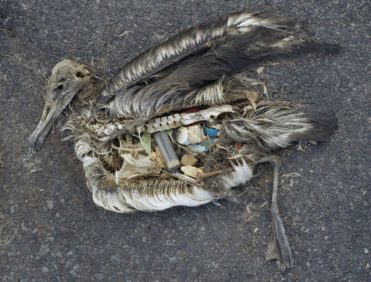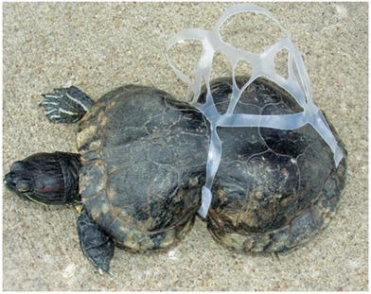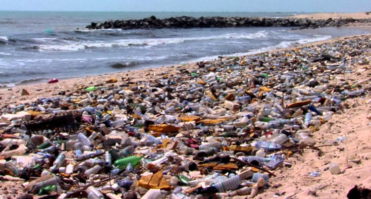Plastic In The Oceans – a brief description of the issues
Plastic is collecting in huge quantities in oceans and seas, sometimes in huge swirling concentrations (called “gyres”), causing severe problems to marine life. Apparent now for several decades, this has been increasingly highlighted by environmentalists and experts, the most notable in the UK being Sir David Attenborough in the BBC Blue Planet series.
Tubeway, as plastic manufacturers, decided to put their toes into the ocean of debate on this topic – this article introduces the issues, and can be read in conjunction with our other articles on the same subject:
Waste Plastic Products – action by government
Waste Plastic Products – action by individuals
How Big Is The Problem?
As an indication, the biggest ocean gyre is in the Pacific, estimated to be 1.6m square kilometres, approximately 3 times the area of France. It is one of several significant gyres in different parts of the world, which exist in addition to a myriad of smaller patches of plastic waste. Measuring volumes of ocean plastics is almost impossible, as gyres form like icebergs with much of the content just below the surface. In terms of growth, estimates differ significantly, but it is likely that many millions of tonnes a year are added to ocean waste concentrations, and worryingly the rate of growth is increasing. It would be fair to say that simply stopping growth would be a mammoth achievement in itself. This article gives more information: https://www.theoceancleanup.com/great-pacific-garbage-patch/
How Does Plastic End Up In The Sea?
There appear to be 3 main routes for plastic to get into the oceans in quantity:
- It is dumped into rivers and waterways. All rivers lead to the sea, and most of what goes into them disappears from view, so if it is a problem, it is somewhere else, and for others to deal with. In the UK, it is an offence to put litter in rivers or canals, rubbish and recycling facilities are often provided at suitable locations, so this may not seem so bad. However, in many other parts of the world there is no waste collected (let alone recycled), so people dispose of rubbish for sanitation purposes as they have always done, in the nearest river. As their garbage has changed from organic waste to plastic this has become a more obvious problem, which is covered in more detail in this article:https://www.weforum.org/agenda/2018/06/90-of-plastic-polluting-our-oceans-comes-from-just-10-rivers/
- Via sewage systems. Wet wipes, cotton buds, feminine hygiene products, fibres from washed clothing, microbeads from cosmetic and cleaning products are very common examples of this. Down your toilet, bath plughole or out of your washing machine, very much out of sight, out of mind, and culturally embedded.
- Waste sea-related products. Much plastic is used in the fishing industry, for nets and ropes and buoys, and these can become waste by accident or design. They are generally made to last in the sea, and also float, and are typically among the largest items affecting marine life.
In terms of where most of this plastic waste is originating, there is plenty of information identifying 5 Asian countries as being responsible for over half of the volume of sea borne plastic waste:https://www.statista.com/chart/12211/the-countries-polluting-the-oceans-the-most/
What Issues Arise From Ocean Plastics?
There are many aspects to the problem:
- Biodegradation. Plastic is such a useful material in part because it does not biodegrade (e.g. as a building material). The half life of solid plastics is anything between 500-1000 years, and even plastic film (such as in carrier bags) takes 10-100 years to decompose.
- Floating. If plastic sank like glass and other heavier waste it would still be a serious pollutant, but far less visible. As it is, winds and ocean currents eventually herd much of it into the huge gyres, attracting all types of marine life for shelter and safety, feeding and breeding.
- The sun and the sea. Plastic may be slow to biodegrade, but the effect of prolonged sunshine on many plastics is to make it more brittle, and wave action can then break it into smaller pieces. The smaller the bits, the more creatures can eat them, and at their smallest (microbeads) every animal in the food chain either ingests them or eats a creature that already has.
- Eating habits. Humans may bite and chew, but many marine critters swallow large items relative to their size then digest them slowly whilst swimming or flying off. Take this whale for example: https://www.bbc.co.uk/news/world-asia-47608949 The intestines are only able to get rid of much smaller pieces, so anything that won’t break down, like plastic, stays in the stomach unless it can go out the way it came it, through the mouth. Unfortunately, marine birds do just this for the benefit of their young, having obvious and far reaching effects.


- Entanglement. Nets have holes that get caught around necks, fins and flippers. On juveniles these then cut into them as they grow causing horrific injuries. Ropes, cords and lines manage much the same as they wind and tangle around sea creatures.
- Habitat Destruction. Marine environments, particularly coastlines, have to withstand many threats – climate change, oil spills, dredging, trawling, dams and many more. Plastic “does its bit” by polluting many breeding areas, like beaches and wetlands.

What Next – Legislation and Education?
Looking at the sheer scale of the problem, it is mind-boggling, and much of what can or needs to be done is way beyond any individual. Ocean clean-up, how waste is disposed of, how manufacturers package products, these are all national or international issues, and they are starting to gather momentum. More thorough research and more governments taking notice of it, producing effective legislation, will be welcome.
In the meantime, individuals want to know what they can do, in bringing pressure to bear on producers of plastic products, along with central and local government. Hand in hand is information for and education of people about the products they use and the way they dispose of them, so personal action has a definite role to play.
These topics are covered in our continuation articles: